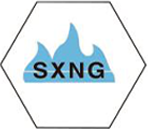
Oct . 09, 2024 06:15
Back to list
Exploring the Efficiency and Design of Modern Heat Exchanger Technologies
Understanding Heat Exchangers Principles and Applications
Heat exchangers are crucial devices widely used in various industries, including HVAC, chemical processing, and power generation. Their primary function is to transfer heat between two or more fluids without allowing them to mix. This efficient transfer of thermal energy plays a vital role in energy conservation, industrial processes, and environmental sustainability.
At its core, a heat exchanger consists of a series of tubes or plates through which one fluid flows, while another fluid passes outside or through the other series. The design of a heat exchanger can vary significantly, depending on the application requirements and the properties of the fluids involved. Common types of heat exchangers include shell-and-tube, plate, air-cooled, and finned-tube exchangers.
One of the key principles governing heat exchanger efficiency is the heat transfer coefficient, which is influenced by factors such as fluid velocity, temperature differences, and the physical properties of the fluids. Increasing the surface area for heat transfer, often achieved through the use of enhanced surfaces or additional fins, can significantly improve efficiency. The effectiveness of a heat exchanger is also measured using the logarithmic mean temperature difference (LMTD) or the effectiveness-NTU method, both of which provide insights into its performance in real-world applications.
heat exchanger

Heat exchangers are used extensively in industries where temperature regulation is crucial
. For instance, in power plants, heat exchangers are employed to extract heat from hot gases produced during combustion, transferring that heat to water to generate steam for turbines. In the chemical industry, they facilitate thermal interactions, such as heating or cooling chemical reactions, thereby optimizing production processes.In HVAC systems, heat exchangers play a vital role in regulating indoor temperatures. They are used in systems like chillers and boilers, enabling efficient heating and cooling of air or water distributed throughout a building. Moreover, heat recovery ventilators use heat exchangers to pre-condition incoming fresh air by transferring heat from the stale indoor air, thus increasing overall energy efficiency.
Despite their advantages, heat exchangers require regular maintenance and monitoring to ensure optimal performance. Scaling, fouling, and corrosion can significantly impact their efficiency and lifespan. Therefore, industries implement various cleaning techniques and materials to mitigate these issues, ensuring that heat exchangers operate reliably over time.
In conclusion, heat exchangers are integral components of numerous industrial applications, facilitating the effective transfer of heat and contributing to energy efficiency. As technology advances, innovative designs and materials continue to emerge, pushing the boundaries of heat transfer capabilities. Understanding their principles and applications is vital for engineers and technicians striving to maintain optimal performance and sustainability in energy-intensive sectors.
Next:
Latest news
-
Safety Valve Spring-Loaded Design Overpressure ProtectionNewsJul.25,2025
-
Precision Voltage Regulator AC5 Accuracy Grade PerformanceNewsJul.25,2025
-
Natural Gas Pressure Regulating Skid Industrial Pipeline ApplicationsNewsJul.25,2025
-
Natural Gas Filter Stainless Steel Mesh Element DesignNewsJul.25,2025
-
Gas Pressure Regulator Valve Direct-Acting Spring-Loaded DesignNewsJul.25,2025
-
Decompression Equipment Multi-Stage Heat Exchange System DesignNewsJul.25,2025

